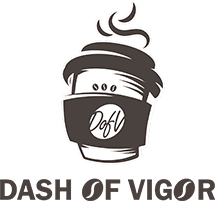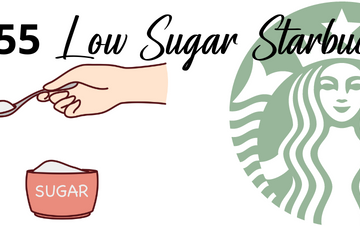Are Lattes Hot or Cold?

Have you ever purchased a latte from your favorite coffee shop, and the barista asked if you preferred it cold or hot? This is a frequent event that confuses many customers. So, are lattes hot or cold?
A Latte is a hot drink that is served at around 160°f. It is made up of hot espresso, steamed milk, and the addition of a thin layer of foam. The espresso is brewed around 195-205°f, and the milk is steam-cooked to 140-165°f.
But, you can also request a cold (iced) Latte which is a hot cup of espresso mixed with a cup of chilled milk and ice.
If a latte is hot, why would baristas want clarification on whether you would prefer it cold or hot?
Let’s find out.
TABLE OF CONTENTS:
- Are Lattes Hot or Cold?
- Can Lattes Be Iced?
- Iced Latte vs Hot Latte: The Difference
- Are Starbuck Lattes Hot or Cold
- Solutions for a Latte that is too Cold
- Can You Reheat a Latte the Next Day
Are Lattes Hot or Cold?
Lattes can be either hot or cold. Both types are great, but the final decision depends on one’s taste and preference. Hot or cold, Lattes usually are milder than other, more robust milk-free coffees. The milk blend makes lattes sweeter, and many people like it better.
If you’re looking for an even stronger brew richer in coffee flavor, you might consider other options instead of lattes.
When you drink your coffee with milk, you may think, are lattes more enjoyable hot or cold?
Coffee drinkers prefer lattes, hot or cold, based on their taste. The optimal temperature for latte milk is a subject of debate. The foam fans prefer hotter milk because it’s less likely to fall apart. Artists who make latte prefer colder milk for their designs, while foam lovers prefer hot dairy because it is less likely to fall apart.
Your milk’s temperature can impact its taste, while cold milk has a more sweet flavor than boiling and has no flavor. This knowledge can help you alter the flavor profile of your home-brewed cappuccinos or lattes.
Can Lattes Be Iced?
Lattes can be iced. Iced Lattes are trendy during hotter days.
Iced (or cold) lattes are pretty simple and can even be created out of instant coffee. However, some iced drinks need “real” coffee and work to make them. Iced lattes are relatively simple to mix. You can fill a glass with ice, pour the milk and coffee, then stir slightly, and you’re ready to drink.
However, some iced beverages can indeed take hours to blend well. This is the cold brew type of coffee, where you have to wait 12 to 24 hours for the coffee to be ready. If you’re not a coffee lover or don’t have the time to take hours waiting for coffee, it’s best to opt for iced lattes instead.
What’s the difference between an iced latte and iced coffee?
Every latte requires milk and coffee. However, other coffees with ice can be prepared without milk. Instead of making the milk steam, put cold milk in the latte mix.
If you want to diversify a bit, you can try some of the Best Hot Drinks at Starbucks.
Iced Latte vs Hot Latte: The Difference
The temperature at which you prepare lattes is essential in how well milk and espresso mix. If you’re making lattes using a typical espresso machine, it is common to boil the water used for the espresso and steam the milk to the exact temperature.
But, if you’re specific and want to warm your latte up, make sure the temperature of the milk and the espresso are precisely according to your preferences. It’s worth considering an espresso machine that has two chambers. The warmer the water, the more flavorful it can get from the coffee beans.
It’s unnecessary to opt for the iced-latte option if you like your coffee to be stronger.
Naturally, the main problem with cold or hot lattes is the taste when you’re in a hurry or have to be on the move to meet an appointment. The last thing you need is a cup of coffee to make your tongue burn.
So, the majority of people who are looking to purchase a latte opt for the hot version. If you’re not safe enough with the hot latte, opt for a more safe, better option: an iced latte cup.
In Starbucks, you can find some of the best iced coffee. So if you want to try something different, do not hesitate to do it.
Are Starbuck Lattes Hot or Cold?
A Starbucks Latte may be cold or hot. Both types are prepared differently.
Starbuck Hot Latte
The hot lattes in Starbucks are prepared with an espresso shot (or two) directly in the cup. Then the barista adds steaming milk and puts a layer of foam on top.
In Starbucks, you can order several different types of Hot Lattes.
In the table below, I have prepared the hot lattes and their nutrition stats for a Grande cup size.
| STARBUCKS HOT LATTES | CAFFEINE | CALORIES | FAT | SUGAR |
| Caffè Latte | 150 | 190 | 7 | 18 |
| Honey Oatmilk Latte | 170 | 270 | 10 | 28 |
| Cinnamon Dolce Latte | 150 | 340 | 14 | 40 |
| Pumpkin Spice Latte | 150 | 390 | 14 | 50 |
| Starbucks Reserve® Latte | 135 | 230 | 12 | 18 |
| Starbucks Reserve® Hazelnut Bianco Latte | 135 | 380 | 18 | 36 |
| Starbucks® Blonde Vanilla Latte | 170 | 250 | 6 | 35 |
Starbucks Iced Lattes
Iced lattes are not so different from hot lattes. The milk for this drink is cold, and the ice cubes replace the milk foam.
The recipe is straightforward. Espresso shots are placed directly into a glass. Then the cold milk is poured over the espresso. Some ice cubes are added to the glass as a finish.
Because milk isn’t heated, an iced latte will not be as smooth or sweet as a hot one. If not specified otherwise, baristas utilize low-fat milk with 2 percent. So if you want to reduce the calories, you can order some plant alternatives.
Starbucks offers several types of Ices Lattes.
In the table below, you can look at them and see their nutrition stats for grande cup size.
| STARBUCKS ICED LATTES | CAFFEINE | CALORIES | FAT | SUGAR |
| Iced Caffè Latte | 150 | 130 | 4.5 | 11 |
| Iced Pumpkin Spice Latte | 150 | 370 | 16 | 45 |
| Iced Honey Oatmilk Latte | 170 | 210 | 6 | 25 |
| Starbucks Reserve® Iced Latte | 135 | 210 | 11 | 16 |
| Starbucks Reserve® Iced Hazelnut Bianco Latte | 165 | 280 | 13 | 26 |
| Iced Cinnamon Dolce Latte | 150 | 300 | 13 | 35 |
| Iced Starbucks® Blonde Vanilla Latte | 170 | 190 | 4 | 28 |
Solutions for a Latte that is too Cold
There are a few techniques that you can use to heat your cold latte.
Steam at a Higher Temperature
For the majority of people, 140 degrees or less is considered to be too frigid for coffee. While steaming milk at 140°F can create more sweetness, the milk can lead to a warm but not hot latte. Utilize a thermometer to experiment with higher steaming temperatures that go up to 160°F.
Simultaneous Pulling and Steaming
An inconsistency between espresso steaming and pulling milk can result in a situation where one sits while you make the other. If you use an espresso machine with a double boiler, start the espresso and then steam the milk.
For single boiler coffee makers, heat the cup and immediately steam the milk right after the espresso is finished. This will ensure that the espresso is hot when you’re done steaming the milk.
Preheat The Cup
The water-only brew process includes a portafilter and an insulated mug, which heats your espresso equipment, resulting in brewing at the correct temperature. The hot mug keeps the temperature over an extended time.
Change The Mug
The kind of cup you use to drink your latte will affect the length of time your drink remains warm. A thermally travel mug that is insulated is a great option if you plan to drink your coffee later. Mugs with slimmer mouths are likely to keep drinks warm over time.
Can You Reheat a Latte the Next Day?
You can reheat a latte. The latte can be warmed on a stove or a microwave. It is even possible to warm it without harming its taste.
But you have to be very careful with the milk in it. If the latte has been left at room temperature for a long time, its milk will not be usable. It is better to throw away the whole latte and make a new one.
What to look for when reheating the latte?
Reheat it before the point of boiling. Latte milk is best served at temperatures between 120 and 160°F. Try foaming milk at 140 degrees when you’re getting started with it, and observe how the bubbles grow.







